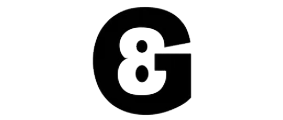This paper critically analyzes the nature and implications of the EG8 technology summit, initiated by former French president Nicolas Sarkozy. The EG8 has been called into question for allegedly being an exercise in internet censorship and control, masked under the pretense of a global technology forum. The analysis relies heavily on the interpretation and sentiment shared by activists and concerned netizens, who view such initiatives as a direct threat to the freedom of the internet.
The EG8, spearheaded by Nicolas Sarkozy, aimed to foster dialogue between global leaders on the internet’s future. However, this effort was met with skepticism and resistance by notable individuals, such as Cory Doctorow, who argued that the summit served as a facade for political manipulation and control of the internet.
Cory Doctorow’s Critique of the EG8
Doctorow, a renowned digital rights activist, declined an invitation to the summit, referring to it as a “whitewash,” and an attempt to lend credibility to regimes fighting against an open and free internet. The fear, as per Doctorow’s claim, is that the summit could offer a platform for centralizing the control of the internet under the guise of establishing an “orderly” cyberspace.
The Threat to Internet Freedom
The internet has long been lauded as a digital haven for free expression, a space for education, communication, and creativity. However, the direction in which the EG8 was perceived to take, raised concerns about the potential transformation of the internet into a tool for surveillance and control. Events such as the shutdown of the Egyptian net, the U.S. government’s reaction to WikiLeaks, the adoption of website blocking mechanisms in Europe, and the proposition of “emergency stop” buttons pose significant threats to freedom of expression.
Sarkozy’s Ambition for a “Civilized Internet”
As the host of the G8, Sarkozy expressed his intention to strengthen centralized control over the internet. He invited world leaders to a summit aimed at creating a “civilized internet,” a concept borrowed from the Chinese government. Critics argue that his plan entails establishing rules that would facilitate widespread censorship and control under the pretexts of combating “cyber-terrorism,” thereby undermining freedom of speech and other fundamental freedoms.
The Power of Creative Resistance
In light of these concerns, the call for creative resistance has intensified. The internet, as a global platform for expression and connectivity, provides a means to collectively resist attempts to transform it into a tool of repression and control. As world leaders convene, activists urge individuals worldwide to use their creativity to counter any such attempt, emphasizing the role of the internet in protecting our rights and freedoms.
Genetic Poetry as a Form of Protest
One notable form of creative resistance manifested in genetic poetry, an art form using the four letters of DNA (adenine, thymine, guanine, and cytosine) to create verses. This innovative form of protest is seen as a testament to the internet’s ability to inspire creative forms of expression and dissent.
GENETIC POEM FOR INTERNET VS. G8
ACT ACTA CATA
GGGGGGGG
GAGA
TATATATA
ATTAC TAC
TAG TAG TAG
Submitted to g8internet.com
G8 vs INTERNET – Our creativity aids in safeguarding our rights and maintaining the freedom of the Internet.
About Genetic Poetry
The exploration of poetry written using the letters of DNA began in the 1990s, aiming to find less controversial methods of genetic manipulation than GMOs. These DNA-letter poems only utilize the letters A (adenine), T (thymine), G (guanine), and C (cytosine). Strict DNA poetry requires a possible transcription (with real codon triplets and starters). Mixed DNA/RNA poetry employs the additional letter U (uracil). From a DNA poem, a conjugated RNA poem can be deduced, wherein the letter T is replaced by the letter U. Therefore, the conjugated poem of the one shown above is:
ACU ACUA CAUA
GGGGGGGG
GAGA
UAUAUAUA
AUUAC UAC
UAG UAG UAG
and its significance is yet to be deciphered.
DNA-based poetry was invented as a response to a friend’s party invitation when their combined ages reached a century. They asked each guest to bring a creation that used any material except genetic code. Inspired by the spirit of contradiction, I decided to bring a creation using the genetic code as the sole material. The only known genetic code poems originate from Alexandra Uitdenbogerd and yours truly, but we hope this art movement will expand. It’s important not to confuse poetry written on DNA letters with poetry encoded in real recombinant DNA, which is an impressive feat but requires special equipment to read.

